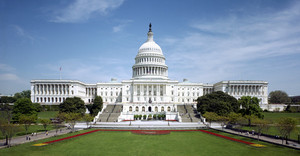A proposal by US Democratic Representative Anna Eshoo included in the US House health reform bill, would give developers of innovative biomedical drugs 12 years of data exclusivity from generic competition, significantly extending their patent rights, writes Los Angeles Times columnist Michael Hiltzik.
The US has fallen behind Europe on regulating the biological drug industry. Mr Hiltzik states it is important that US regulators catch up, because these drugs are expected to be at the centre of medical science for decades. They are also, at the moment, horrifically expensive. Biotech treatments for cancer and arthritis can cost US$50,000 a year; a drug for one debilitating genetic disorder costs US$200,000. Plainly, competition from generics, or "follow-on" drugs as they are known in the trade, will help lower those prices. Backers of the industry say the high prices of some biodrugs mislead people into thinking the whole industry is awash in profits. On the contrary, they say they need special protection because biotech comprises mostly small, venture-backed firms whose rate of failure is high.
"People don't believe it when we say that biotech is barely hanging on by its fingernails from a venture capital point of view, but it's not an exaggeration", says Jack W Lasersohn, a partner at the venture firm Vertical Group, who testified before US Congress several months ago in favour of the 12-year rule. "The wrong decisions here will have a devastating impact on investment in biotech".
On the other side of the coin, Paul Bisaro, Chief Executive of the Corona-based generics manufacturer, Watson Pharmaceuticals, said that the biotech manufacturers are getting too much protection, especially from the evergreening provision. If that were enacted, "we'd have to ask whether there'd ever be a substitutable follow-on drug at the end of the rainbow. We wouldn't be doing generic biologicals the way we do generic drugs today".
Mr Hiltzik explains that biological drugs differ fundamentally from conventional pharmaceuticals, which can be produced in the chemistry laboratory. Biologicals are far more complex and typically are produced using live animal or human cells. Their R & D is generally more expensive and more likely to run into a dead end, regulatory approval is less certain, and the target markets may be smaller. Those are all arguments in favour of giving manufacturers greater financial incentive to develop these drugs, say by raising the bar for competition from copycats. On the other side of the coin, copying these drugs is not as simple as manufacturing a knockoff of ibuprofen or a cholesterol medication. Given the variability of biological manufacturing - the drug can be affected by the strain of animal cell being used or even by the laboratory hardware - no one is sure that generics can duplicate any biomedicine exactly. Conventional generics today are such reliable matches for branded drugs that pharmacists are often permitted to substitute them in prescriptions on their own. That may not be the case with the biologicals market, in which follow-on biologics will be "biosimilar", not identical. So some experts doubt biological follow-on biologics will ever be as competitive or cheap as today's generics. That is a point in favour of giving follow-on biologics a leg up, say by limiting the exclusivity period. (see also Is US Congress poised to hinder biosimilars market entry? and Considerations about the exclusivity period of biologicals)
Reference:
Biotech firms would get extended patent protection in Eshoo's measure. BIO SmartBrief. 2009 December.
Michael Hiltzik. Biotech bonanza lurks in healthcare reform bills. A proposal by Rep. Anna Eshoo would give developers of innovative biomedical drugs 12 years of statutory protection from generic competition, significantly extending their patent rights. Los Angeles Times. 2009 December 17.
Source: BIO SmartBrief; Los Angeles Times








 0
0











Post your comment